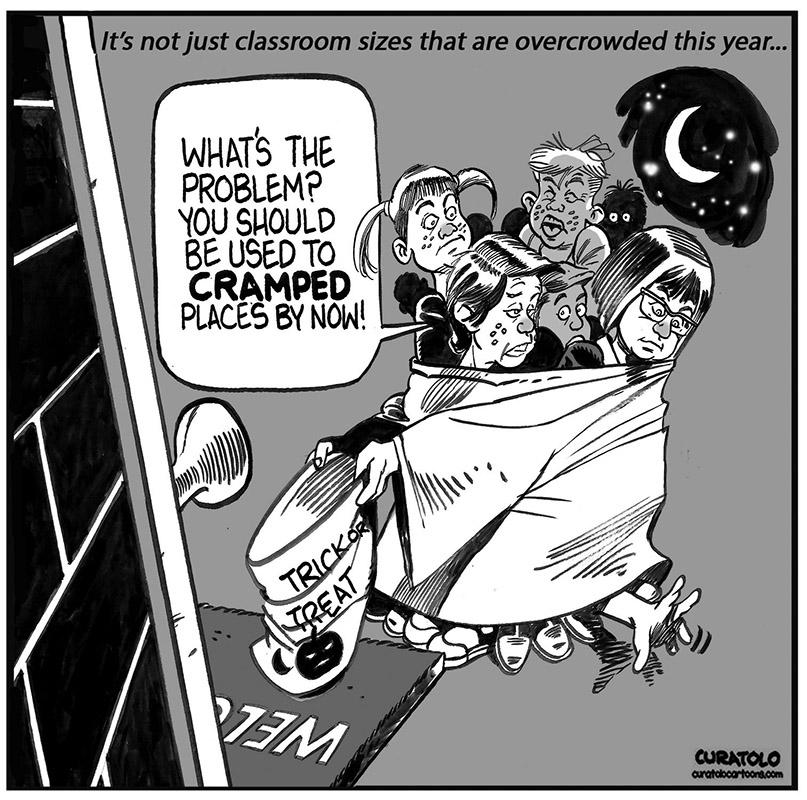Question: My district is having difficulty filling advertised teaching positions, and there are never enough substitute teachers available to cover absences. What is the Association doing to address the teacher shortage?
Answer: Your experience is not unique, and it seems to be becoming more widespread. There were always challenges filling certain teaching assignments, especially in locations further removed from the major urban centers in the province, but now it seems that the problem is not only more severe and provincewide, but also one being experienced in other Canadian jurisdictions and even internationally. It is complex and multi-dimensional, and I am afraid there are no easy answers. But we can identify some factors that point to potential paths forward.
To begin with, what we may be experiencing is not so much a shortage of qualified teachers, but rather a shortage of teachers who are willing to continue working in the profession. Teachers’ professional preparation and classroom experience equips them with a formidable array of knowledge and skills that can be applied to other occupations. It’s always been the case that a proportion of graduates from university education programs never enter the classroom and of those that do, a further proportion will leave after having taught for three to five years, never to return. These individuals are taking other career and life paths. It appears, though, that attrition rates seem to be increasing across all demographic groups, with more experienced teachers deciding to leave the classroom as well, contributing to the staffing challenges facing our schools today.
There are a variety of responses that may help attract new people to teaching and reduce the loss of experienced teachers, including the following:
- Improving teacher compensation: With teacher salaries having lost ground to inflation, improving teacher salaries would help make the job more attractive in comparison to possible alternatives. Of course, adjusting compensation is the classic solution to labour shortages in a market environment.
- Improving classroom conditions: Students’ learning conditions are teachers’ working conditions. Increases in class size and complexity are exacerbating existing conditions and imposing new demands on teachers, contributing to moral distress, reduced job satisfaction and the decision of some teachers to leave the profession.
- Improving support for inclusion: While teachers overwhelmingly support the principle of including students with diverse learning needs in an integrated classroom, a lack of sufficient support and assistance for teachers working with these students has been identified as a significant source of teacher dissatisfaction.
- Respecting teacher professional judgment and autonomy: Teachers are reporting that they are not being allowed to exercise their professional judgment and are being second-guessed when they do. This problem is being made worse by the politicization of education and the attempts of external interest groups to impose their own agendas on teachers’ practice.
- Increasing the focus on student learning and well-being: Teachers do not teach subjects, they teach students and to do so successfully, students need to arrive at the classroom door healthy, well rested, fed, secure and ready to learn. Teachers cannot solve the systemic societal problems that impede student learning, but are still expected to deal with the consequences of those problems as visited in the classroom. Furthermore, teachers feel great satisfaction and joy when they can foster students’ innate curiosity and love of learning, but too often they are saddled with excessive and overly prescriptive standardized curriculum and assessment that actually get in the way of meaningful teaching and learning.
- Attracting new recruits to the profession: The teaching profession does not currently reflect the diversity of the province’s population. Part of the problem is that teaching is not necessarily regarded as an attainable or perhaps desirable career option among some underrepresented groups. The profession must find ways to reach out to this potential source of new teachers.
- Respecting teachers and the profession: In recent years some provincial politicians, including former minister Adriana LaGrange, have systematically marginalized and denigrated the profession and the Association. Teachers have felt under constant attack and teacher morale has taken a beating.
The Association is working on all these issues though collective bargaining, policy, advocacy, outreach and public promotion and we will continue to do so going forward. The good news is that Minister Demetrios Nicolaides and senior officials of Alberta Education have recognized teacher recruitment and retention as a critical issue and have begun working with the Association and other stakeholder organizations to seek solutions. It will not be an easy fix, but at least we now have some partners willing to work with us on it. ❚

ATA Executive Secretary


